TNR(R) – TRAP, NEUTER, RELEASE (RABIES)
If you have been in an area with feral cats, you know how quickly that situation can get out of hand. Cats that cannot be handled are dangerous for multiple reasons, and a growing population can become unmanageable rapidly. At Journey Home we want to help the community keep themselves, their pets, and the feral cats safe. In order to do that, we follow a process called TNR.
If you have feral cats in your neighborhood or your yard, the first thing you need to do is look for the three things that keep cats in an area. Food, shelter, and water. Take a few moments to think about your property. Is there a food and/or water source that you can eliminate?
Shelter is another consideration. Is there a place where the cats can hide? A shed or barn, unused vehicles, or other similar locations are perfect places. The key thing to note is that removing one feral cat from an area will not eliminate all cats. The only way to permanently remove a group of cats is by removing the things that keep them in one place: food, water, and shelter.
If you have a cat of your own, you can still reduce the chance of a feral cat(s) by only feeding and watering enough to support your one cat. By offering more food and/or water than needed to sustain your cat, you increase the chance of other cats coming into that area for access to the easy meal. You don’t need to worry about removing access to food and water harming/killing the cats. The cats in your area will relocate to find food/water. They will move long before they starve or dehydrate. Equate feral cats to other wild animals – they will do what they need to in order to survive.
Another important step when attempting to reduce a feral cat population, is altering the cats. Using a trap is the best way to accomplish this. A true feral cat will have to be trapped. It will not let you grab it, and if you happen to get close enough it will bite and/or scratch and could cause actual damage. The safest option for you and feral the cat is to use a trap. If you have your own trap, it is fine to bring the cat to the shelter that way. If you need a trap, our vet staff can rent one to you. When you bring the trapped cat, please also bring a carrier crate.
Unfortunately, our shelter is not equipped to house feral cats long term. For this reason, we only accept them Monday through Thursday. Communicating with our veterinary team during this process is key. If you have a feral cat who needs to be brought in and you are going to attempt to trap them, please contact our vet team in advance. Allowing us time to prepare to receive a feral cat is important and necessary so that we are ready and able to accept the cat.
Our vet staff will sedate the cat in the trap, alter them, move them into a crate, and send them back with you post-surgery to be released. The cat cannot stay at the shelter. A feral cat is a wild cat. The best option for them after surgery is to be released. Adoption isn’t an option for a feral cat. Fixing feral cats is a vital step to ensuring the population doesn’t grow. However, if you want the cats out of your community, you need to eliminate their access to food, water, and shelter.
The last R in TNR was expanded by our veterinarian to include a rabies vaccine. Rabies shots are obviously important, and a population of feral cats is no exception. Though these cats don’t have homes, they still can, and likely will, be in contact with people and pets. A rabies vaccine can eliminate possible future issues for feral cats and the animals they co-mingle with.
We are always happy to answer any questions regarding feral cats. We understand that the majority of the time, you didn’t ask for these animals to be at or near your home. We know that you’re doing your best by bringing them to us to be altered and vaccinated. We want to work with the community to ensure that all animals, pets and feral, are safe and healthy. Practicing TNR makes a true difference across the board. By reducing the feral cat population, you are helping the health of the cats as well as their environmental impact.




